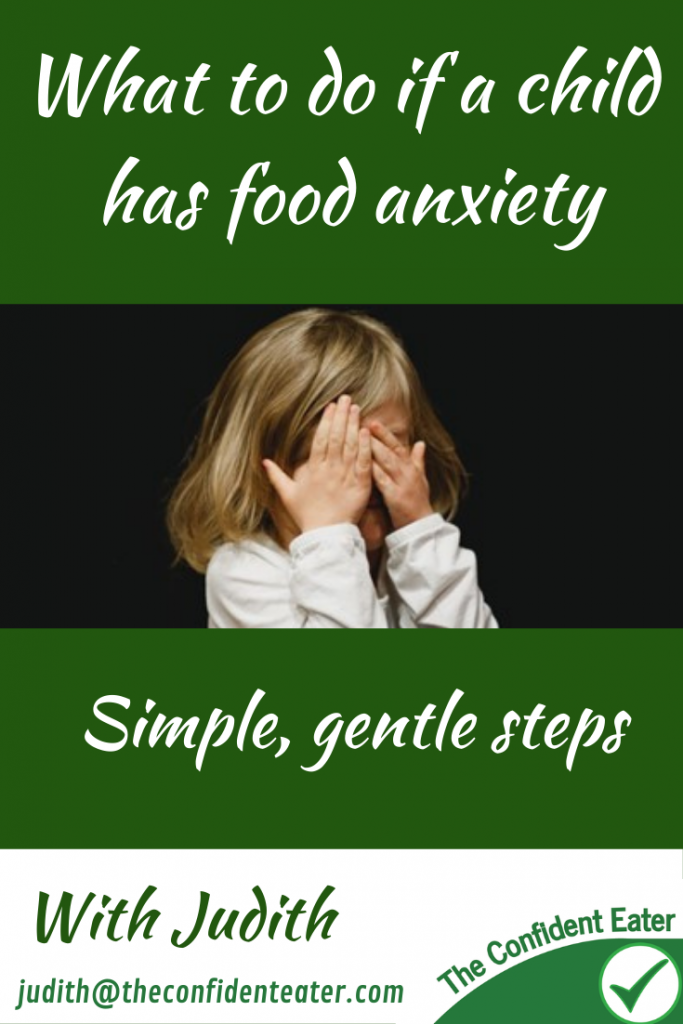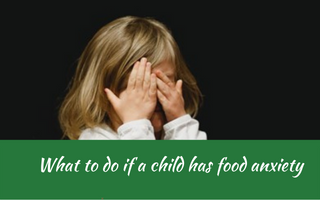
What to do if a child has food anxiety
Toddlers often go through a food neophobic phase or a fear of foods, and this is a normal developmental phase. It stems from an evolutionary need to stay safe when wandering away from mum and not putting a poisonous plant in the mouth, for example.
Food anxiety is common among fussy eaters in general. If food is not something you are comfortable with it makes sense that it could make you feel anxious, especially if you feel pressured to do something you’re not sure you can manage.
The fear of new foods may also include foods that look or smell different to the usual presentation. Frustratingly it can also include things that previously were eaten.
Anxiety in general though can also lead to picky eating. Children can develop food fears as eating is a ‘good place’ to fixate worries. Children are in charge of what goes into the mouth.
There are also often reasons why children have developed anxiety around food.
Reasons for food anxiety
1. Oral motor/medical issues – some children have had eating challenges. Perhaps they have choked on a food and naturally that has led to an extreme reaction to eating that or similar foods again.
Or maybe a food has caused discomfort or even pain. If so, it’s logical to then become anxious about repeating the experience.
2. Sensory sensitivities – these are far more prevalent among fussy eaters than we expect. Having a level of discomfort about the way a food looks, feels, smells or tastes is quite common.

Children with ASD frequently find certain sensory inputs uncomfortable, and eating is a massively sensory experience. It involves all our eight senses, so a dysregulation in just one can make food uncomfortable and therefore create anxiety around eating it.
Severe sensory sensitivities can even make food painful to eat. No one is going to be enthusiastically eating if this is the case.
3. Allergies or food sensitivities – if a child has severe reactions to food it is concerning not just for them but for us as parents too – which children pick up on. This fear of a negative reaction can naturally be anxiety producing.
A mild anxiety may be protective as it means a child is more cautious around foods that are potentially going to make them unwell.
However, if this becomes a greater fear it can become overwhelming and lead to extreme anxiety around food.
4. General anxiety – if a child has anxiety in other areas then this can become a feature in the eating sphere too. If the anxiety precedes the eating challenges then working on the anxiety may be the key.
Anxiety can of course also become a side-effect of extreme picky eating, where children begin to withdraw from social occasions where food may be a feature.

Whatever the reason, if your child has a negative experience around food or believes that will be the case, then it can produce a strong aversion to foods. A child can seem physically unable to eat a food.
Food phobias
Food phobias are the next level of fear, where children totally freak out over a food and seem exceptionally fearful over something totally benign, like a lettuce leaf.
These children may not even have a history of picky eating, but the fears develop later as a side-effect of their anxiety. It can be in regard to a specific food or across many.
Children with extreme food fears may even be uncomfortable being in the same room as a food.
If this is your child then seeking expert help is advisable.
However, whatever the level of discomfort there are some strategies that can be helpful.
What to do if a child has food anxiety
1. Establish why. Knowledge is power. Understanding the underlying cause of the anxiety can be useful.

Does the food fear stem from general anxiety, or is it due to extreme picky eating which includes a discomfort and even fear around foods?
Or, has your child had a traumatic experience around one or several foods? For example, an undiagnosed allergy or food sensitivity could have been causing discomfort for a while before it was picked up.
I worked with a family whose daughter had had an undiagnosed allergy for months before it was picked up. She frequently vomited and had severe stomach aches.
In order to protect herself she began unconsciously narrowing her food choices to those where she was confident she would not feel unwell. This became a rotating menu of crackers and plain pasta.
I remember thinking how logical that seemed for a two, year old!
2. Remove pressure. Feeling obliged to do something is rarely comfortable. If a child is anxious about eating a specific food then worrying that they may be forced to eat it if they come to the table will naturally only increase that anxiety.
Any sort of pressure, even if it’s subtle (like parents rolling their eyes or scowling) can mean that a child is anticipating a negative experience which can increase the anxiety.

Overt pressure – and this often comes from a place of love and good intentions – can be very difficult. In fact, studies show that the more relaxed we are, the more likely we are to eat.
3. Giving more control. It seems counter-intuitive sometimes to remove pressure. “If I don’t push them, they will never eat it”.
However, the opposite is generally true. If a child knows they are able to make decisions around food it can be empowering and lead to more willingness to try things.
4. Building a comfort level. Foods can become less anxiety producing as we get to know them better.
How we do this will be determined by the level of anxiety. A very food anxious child may need to step right back to move forwards.
I worked with a family who had a young child with ASD. He found fruit really challenging so his mum bought wooden fruit in the same shape and colours as real fruit.
They played together with the wooden fruit for a few months, then mum was able to easily swap a real banana for the wooden one.

The comfort process will look different for each child. It may be shopping for foods, washing them, helping to prepare them for someone else or carrying them to the table on a plate.
5. Teamwork. Again, this will depend on the age and stage of your child, plus their level of anxiety.
However, we are often able to have gentle conversations with our child about what is bothering them. Discussing it in the car or before bed can be better than at the table.
Taking a “how can we help you?” rather than “how can I get you to eat this?” approach can be helpful.
6. Making things easy. If there is anxiety, then sometimes we are able to reduce that with some simple strategies.
For example, if a smell is anxiety producing we may be able to cover the dish to prevent the smell being overwhelming. Or, if something is visually difficult perhaps we can place it behind a vase on the table.

7. Simple calming exercises. Anxiety can produce some unpleasant physiological feelings like a racing heart, difficulty breathing, a churning stomach, shaking, and feeling hot and sweaty.
When these feelings kick in it’s activating our flight, fight or freeze response so non-essential functions like eating shut down. Plus, who wants to eat when they are feeling so overwhelmed?!
Teaching our child how to tackle these feelings themselves when they start to feel anxious, like using calming techniques such as deep breathing can be really useful as they begin to recognise the signs and implement strategies.
If our child is not able to do this for themselves, us remaining calm and gently implementing some of these strategies for them – for example, getting young children to blow into a balloon – can help.
8. Validating but not endorsing fears. Acknowledging how something makes our child feel is important. To them these fears are real.
However, it’s also crucial to not agree that they are right to feel anxious about a food. Gently scaffolding steps so they can get closer and be less fearful is important.
The more we fear something, the greater that fear can become over time if we don’t tackle the issue.

If you do have a child who is food anxious, thinking of ways to gently enable them to interact with those foods that are triggering – and perhaps to begin with it may be just through pictures – is a great way to gradually overcome discomfort.
However, if it’s general anxiety that is driving the food discomfort then addressing the source of the anxiety can be really helpful.
If you found this blog useful, perhaps you can share with another parent who has a child with food challenges.
Judith is an AOTA accredited picky eating advisor and internationally certified nutritional therapist. She works with 100+ families every year resolving fussy eating and returning pleasure and joy to the meal table.
She is also mum to two boys and the author of Creating Confident Eaters and Winner Winner I Eat Dinner. Her dream is that every child is able to approach food from a place of safety and joy, not fear.
Learn more about Judith here: https://theconfidenteater.com/about/

